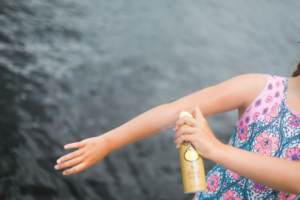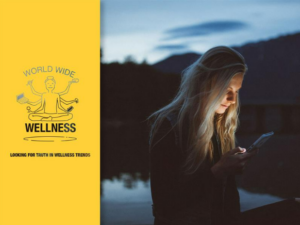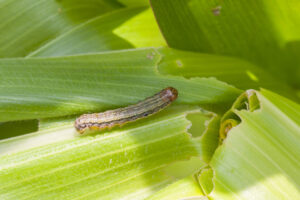Western Australian scientists were part of an international medical trial testing the efficacy of a new vaccine on pregnant women and their babies.
The trial applied a new approach based on mothers passing antibodies to their babies.
The study found the RSVpreF vaccine helped protect newborns from the respiratory syncytial virus (RSV).
HOW DO VACCINES WORK?
A vaccine causes a person to produce antibodies that bind to virus particles. This stops them from infecting human cells.

Viruses have different surface proteins that our bodies use to recognise them | NIAID via flickr
Most vaccines aren’t directly given to babies under six weeks old because there is limited data around safety.
So researchers found an alternative method.
During the last three months of pregnancy, antibodies are passed from an expecting mother to their baby. This protects newborns during their first weeks of life.
Doctors have known this for a while. So theoretically, if an expecting mother had antibodies from a vaccine, she should be able to pass some of it to her baby.
Professor Peter Richmond is the Head of the Vaccine Trials Group at the Telethon Kids Institute. He contributed to the Australian trials.
“In the last 12 weeks of pregnancy, there’s a very active process where antibodies in the mother’s blood are transferred through to the baby through the placenta,” says Peter.
“The baby when born actually has 10% higher antibodies than the mother herself.”
“This is nature’s way of helping protect very young babies from infections that mothers are exposed to.”
WHAT IS RSV?
In adults, RSV usually causes mild, cold-like symptoms. But in infants and young children, it can cause serious illness and even death.
It is one of the most common causes of a chest infection called bronchiolitis. If infected, infants can also become more vulnerable to pneumonia.
RSV is responsible for around 464 per 100,000 hospitalisations for children under five in Australia. In contrast, influenza only accounts for around 58.

Sick baby boy applying inhale medication by inhalation mask to cure RSV at hospital | Getty Images
It’s usually a minor illness, but in 2019 RSV is estimated to have caused over 100,000 global deaths in children under five.
Compare this to influenza, which kills roughly 300,000 people of all ages globally each year.
Due to a lack of hospital care, 99% of these deaths occur in low and middle-income countries. But RSV is a threat to anybody with a weakened immune system, including babies.
BABY’S BEST DEFENCE
The groundbreaking study followed 3,682 pregnant women in 18 countries who received the RSVpreF vaccine and compared them to 3,676 pregnant women who were given a placebo. The vaccine was given to each woman during the late second or third trimester of pregnancy.
Within 90 days after birth, six babies in the vaccine group and 33 babies in the placebo group had severe lower respiratory tract illness. This illness is often caused by RSV.
After six months, the researchers checked the number of infants who were administered to hospital with respiratory illnesses. They found 19 of the vaccinated babies had been hospitalised compared to 62 placebo babies. They concluded that the vaccine had worked.
By vaccinating the mothers, the researchers could reduce the number of babies infected with RSV. And if babies did contract the virus, the antibodies helped to reduce its severity.
“Antibodies from the mother generally last 3–6 months [in the infant] depending on the natural level of antibodies,” says Peter.
“That’s exactly what’s happening with the RSV vaccine.”
MOTHER KNOWS BEST
Giving pregnant women vaccines to protect their babies is not a totally new method.
The World Health Organization recommends this method to protect babies against some diseases such as tetanus, influenza and whooping cough.
“What we learned from whooping cough is the earlier you vaccinate, the better,” says Peter.
“Up to 20 weeks before birth leaves very high levels of antibodies in babies.”
“This is called passive immunisation.”
FUSION CONFUSION
The vaccine doesn’t have a commercial name yet. It’s currently referred to as the RSVpreF vaccine.
The name describes how the vaccine training the body to target the fusion protein on RSV particles.
ICYMI, fusion proteins allow the virus to fuse with the membrane of human cells.
But the same protein that allows the virus to infect human cells also becomes its greatest weakness.
How? The vaccine trains the immune system to produce antibodies that intercept the virus. These antibodies then bind to the fusion protein, stopping virus particles from fusing into human cells and infecting us.

GIPHY
The exciting thing about the new RSV vaccine is that it combines the natural protection pregnant women offer their babies with cutting-edge vaccine research.
By joining forces, they subvert one of the virus’s greatest tools in infection and could offer a significant defence against RSV.









